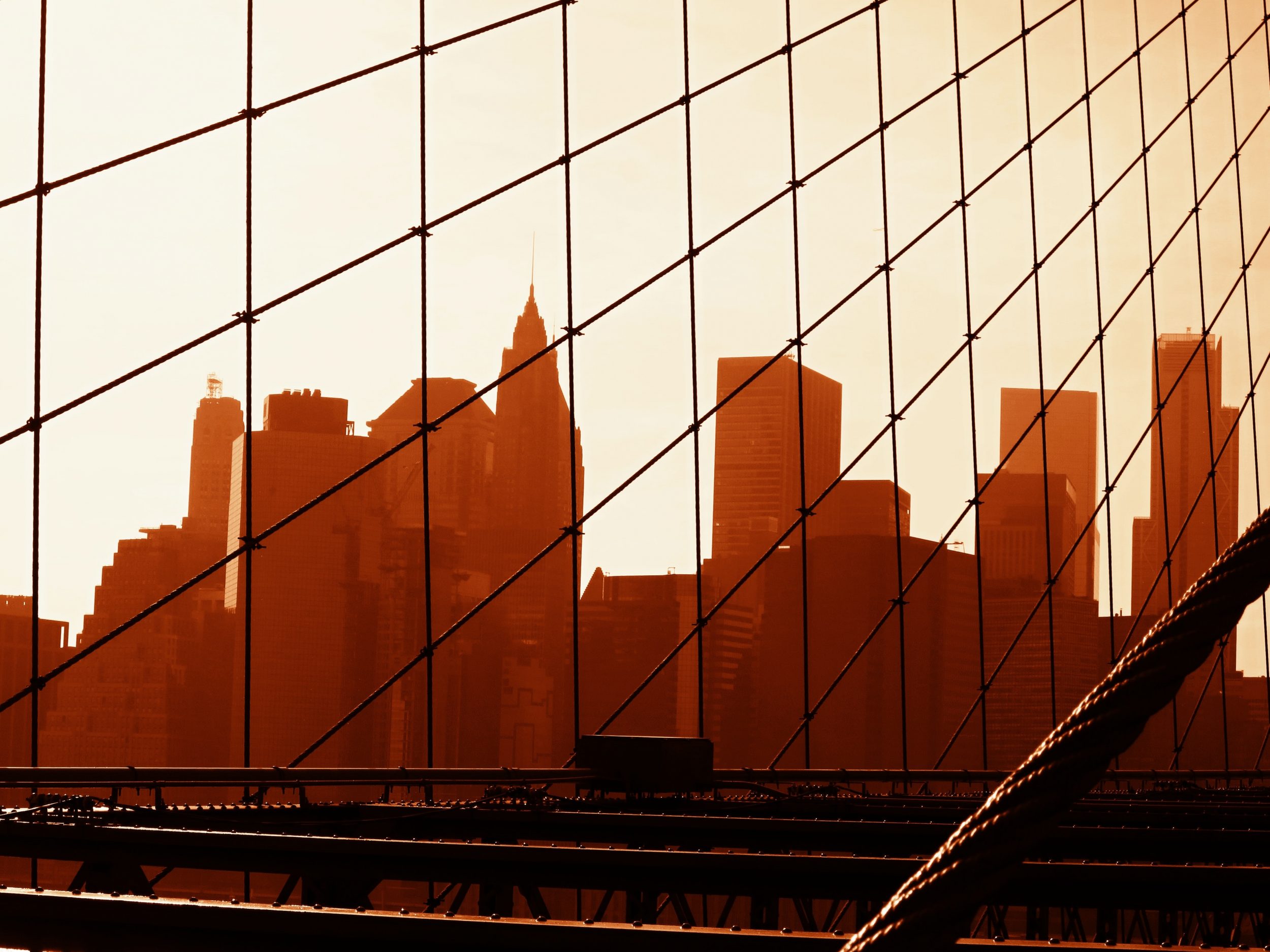In August, a Black man with severe medical and mental health needs stood handcuffed before a Brooklyn judge to be arraigned in criminal court. As the assistant district attorney prepared to request bail, as that prosecutor’s office routinely does, and the judge prepared to impose it, as she routinely does, the COVID-19 pandemic and other horrors continued to ravage New York City jails — including, or especially, the notorious and inhumane Rikers Island jail complex, where a rising death toll served as the elephant in the room. When the prosecutor requested $100,000 bail, the defense attorney noted that the accused was in the midst of treatment, which would be impossible to continue while incarcerated. Despite the clear need for medical attention and the well-documented medical indifference at Rikers, Judge Archana Rao set $50,000 bail, effectively remanding an immunocompromised man to a potentially deadly future in detention.
We know this because for years, volunteer organizers and members of the CourtWatch NYC program, an initiative of the Envision Freedom Fund — formerly the Brooklyn Community Bail Fund — have watched New York City’s district attorneys and judges send countless people to Rikers, despite full knowledge of the inhumane conditions that have persisted there since long before the pandemic turned the jail into a hellscape of sickness and death. As court watchers have witnessed and documented, these judges and prosecutors’ actions have directly contributed to the latest crisis on the island, where staff absenteeism, declining medical care, overcrowding, and conditions that have been likened to torture have worsened human suffering on the island. And where suicides, near suicides, and other close calls have become all the more common. This year alone, at least a dozen people have died in city jails, the majority occurring on Rikers Island.
This is state violence, sanctioned and perpetrated by lawyers in suits and robes who wield enormous power in the city’s criminal legal system. They’re the true jailers of Rikers.
This is state violence, sanctioned and perpetrated by lawyers in suits and robes who wield enormous power in the city’s criminal legal system. They’re the true jailers of Rikers.
On the one hand, district attorneys — and the army of prosecutors they employ — are some of the most powerful actors at the front door of the prison industrial complex. New York City is no exception. DAs and their assistants have the power to decide whether or not to bring charges against someone, and what those charges will be; the classification of the charges, which has serious implications for the severity of the resulting penalties, and whether the system labels a person violent or nonviolent; whether to request bail, which, depending on someone’s ability to afford it, could upend a person’s life and livelihood; and whether to offer a plea deal, which is often a tool of coercion and punishment. And with upwards of 90% of convictions in New York City resulting from plea deals, prosecutors are responsible for the sentences people receive as well. As top law enforcement officials, they oversee a system that has caused perpetual harm, trauma, and death to Black and Latinx communities.
Pushing the limits of the law and their own discretion, New York City’s local DAs are known for deploying tactics to intentionally jail people on Rikers Island. In August, a prosecutor in Brooklyn requested $25,000 bail for a young Black man who denied the allegations against him. When asked to justify this request, the prosecutor’s only reasoning for it was that the charge was a B violent felony.
The prosecutor’s justification may seem uncontroversial to those unfamiliar with the court process, but the reasoning is hardly legitimate. When prosecutors cite the classification of the charge as their reason for setting bail, what they are demonstrating is their willingness to request bail just because they can, not because any law or policy compels them to. As the sole deciders of what charges to bring, prosecutors have a perverse incentive to “upcharge” — or bring more serious charges against an accused person — and then later hide behind the charge’s severity to justify their outrageous request for bail or jail.
On the other hand are judges, who bless these requests. Even more so than DAs, whom New Yorkers elect, our local criminal court judges, who are appointed by the mayor, are accountable to no one. Prosecutors may be responsible for the initial decision to request bail, but judges, as gatekeepers of who is sent to Rikers, could well choose compassion and leniency instead. Yet, in case after case, judges decide to set bail on people who are houseless, struggling with addiction or mental illness, or have severe medical needs that cannot be met in jail.
New York City’s local judges seem to be more accountable to The New York Post than they are to the people of New York City.
New York City’s local judges seem to be more accountable to The New York Post than they are to the people of New York City — especially those who are most marginalized. When the Post and other media outlets ran a stream of fearmongering news stories in 2020 falsely tying bail reform to crime trends, or even specific incidents, judges seemed to have been paying attention and increased their use of bail and pretrial detention during the second half of the year. As a recent report from the Center for Court Innovation has suggested, judges could well be responding to misleading or unsubstantiated claims about bail reform by public officials, which the media then ran with and amplified. Yet story after story of pretrial detention killing over a dozen people in 2021 doesn’t seem to move judges the same way, and they continue sending people to Rikers as if it were business as usual.
In all of this, you’d be hard-pressed to find a judge or DA who acknowledges the violence of their own actions in sending people — mostly poor people of color who have been hit hardest by both the COVID-19 pandemic and the ensuing economic crisis — to a place that is actively killing people. How many people have to die in our city’s jails before DAs and judges’ actions are considered violent themselves?
Our DAs may be elected, but we have found that there is rarely, if ever, any accountability to the voters who elected them. For years, DAs have evaded oversight by paying lip service to advocates and banking on the public’s unfamiliarity with the scope of their power. But court watchers know. On September 27, one of them saw a prosecutor in Manhattan request $100,000 bail for a woman who, the defense explained, was in dire need of mental health services and could not afford any amount of bail. Judge Herbert Moses set $25,000 bail anyway.
As this violence continues, New York City’s DAs, some of whom claim to be progressive, have done next to nothing to stop it. Bronx District Attorney Darcel Clark recently lamented the crisis on Rikers, but she remains silent about her own office’s decision to continue requesting bail at arraignments. Queens District Attorney Melinda Katz claims to be reviewing “the securing orders of those who are being held at Rikers on Queens cases, with an eye toward expediting swift and just resolutions,” yet her office continues to request bail in the face of a worsening crisis. Meanwhile, outgoing Manhattan District Attorney Cy Vance, who has sent more people to Rikers Island than any of his colleagues, pats himself on the back for directing his office “not to ask for bail in nonviolent crimes” — laying bare the inexcusable truth that, prior to this announcement, his office did the opposite, which New York state’s latest bail reform law doesn’t allow.
And the office of “progressive” prosecutor Eric Gonzalez, the Brooklyn district attorney, has sent thousands of people to jail in the midst of the current public health and jailing crises. His spokesperson claims that his office is only requesting bail on cases that involve “violent and repeat offenders.” But New York’s bail statute, both pre- and post-reforms, does not allow a person’s so-called “dangerousness” to be considered when setting bail. Gonzalez’s stated practice is emblematic of the larger issue of whose safety the criminal legal system prioritizes — with those accused of violence deemed less worthy of humanity, such that their lives may be destroyed with incarceration. In a recent letter to these DAs, a group of lawmakers recognized that prosecutors’ decisions and the crisis at Rikers are interconnected. “The two sites — the blunt torture of Rikers and the formal violence of the courtrooms in which you seek cash bail — are inextricably linked,” they wrote.
The far more practical and humane solution at their fingertips is to simply use their broad powers to decarcerate the jails. And to immediately stop requesting bail in all cases. Because, with judges as co-conspirators, DAs Vance, Gonzalez, Clark, Katz, and Staten Island’s Michael McMahon are directly responsible for pushing so many lives to the brink. Now they must shoulder the responsibility for preventing so much death and despair from getting worse.
Of course, this crisis runs far deeper than the current moment. Rikers substantiates the horrors of incarceration that have existed for decades and amplifies the reality of the criminal punishment system’s short- and long-term human consequences across the nation. The scale and speed at which the prison industrial complex — with DAs and judges at its helm — are hurting our most marginalized communities is greater than ever. As calls to “free them all” grow louder, we must fight for a world free of cages and prosecution — and free of the violence that these actors and systems have perpetrated for so long.
Image: Unsplash

